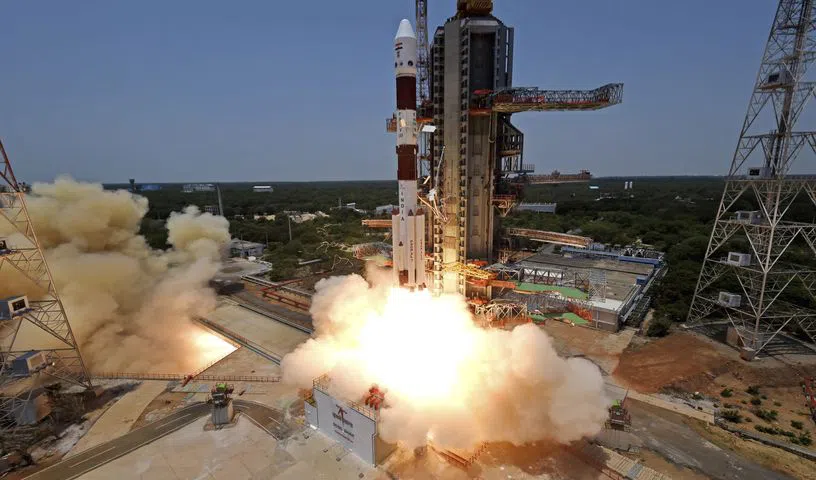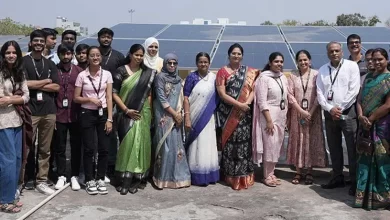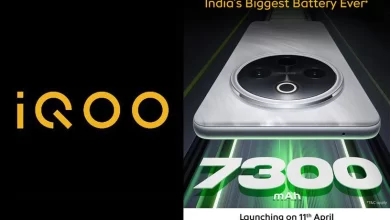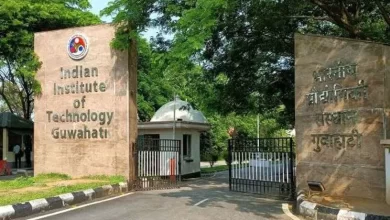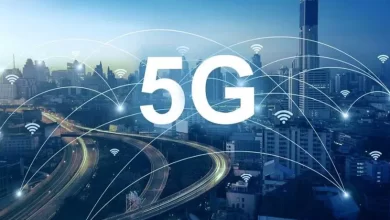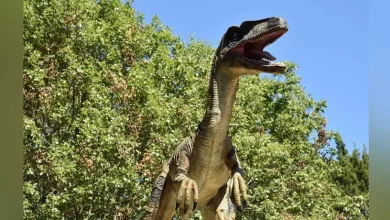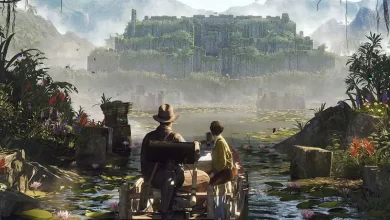India’s national space agency’s biggest achievements to date have been one mission to sun, two missions to moon and one to Mars. And it is all set to launch a manned mission by the end of 2026
Hyderabad: It was on April 19, 1975, that India strode into the ‘space age’ with the successful launch of Aryabhata, the first satellite, named in honour of the mathematician and astronomer Aryabhata. Since then, India has made significant leaps in the vast and endless space domain through the Indian Space Research Organisation (ISRO), the flag-bearer of the Indian Space Programme.
Let us know the milestones India achieved in the domain of space.
INSAT
Commissioned in 1983, the Indian National Satellite (INSAT), a series of multipurpose geostationary satellites launched by ISRO to conduct telecommunications, broadcasting, meteorology, and search and rescue operations. With nine operational communication satellites in the geostationary orbit, the INSAT system is one of the largest domestic communication satellite -systems in the Asia-Pacific.
The INSAT satellites have applications in educational TV services, television, satellite-aided search and rescue, disaster management, and geopolitics. It also helps in commercializing space programmes, such as launching communication satellites of other countries or agencies.
Remote sensing satellites
In 1988, ISRO deployed several operational remote sensing satellites that provide disaster management support, aid bio-resources and environment survey and mapping (RESOURCESAT), cartography (CARTOSAT), agriculture, rural and urban development (for example: National Drinking Water Mission). These landmark developments would not have been possible without the vision of Dr Vikram Sarabhai, the founding father of the Indian space programme.
Mission Chandrayaan
India launched its first Moon mission Chandrayaan-1 in October 2008 using its light rocket Polar Satellite Launch Vehicle (PSLV) and the second mission on July 22, 2019, with the Geosynchronous Satellite Launch Vehicle-Mk III now renamed LVM3.
Chandrayaan-3 was launched from the Satish Dhawan Space Centre, Sriharikota on July 14 2023 by LVM3 M4. The main scientific objective is to demonstrate end-to-end capability in safe landing and roving on the lunar surface. The Chandrayaan-3 successfully landed on moon on August 23, 2023. Also a hop experiment on the Vikram Lander was conducted and the Propulsion Module of Chandrayaan-3 was moved from an orbit around the Moon to an orbit around Earth, where it operated until August 22, 2024.
The success of the Chandrayaan-3 mission made India the fourth country in the world to land and ride on the Moon’s surface after the US, Russia, and China.
Other Major Developments
1961 Research in the domain of space was under the jurisdiction of the Department of Atomic Energy
1962 Homi Jahangir Bhabha founded the Indian National Committee for Space Research, with Dr Sarabhai as Chairman
1962 Indian space programme began gaining prominence with the launch of sounding rockets
1963 Thumba Equatorial Rocket Launching Station was established near Thiruvananthapuram
1967 India developed an Indigenous technology of sounding rockets called the ‘Rohini Family’
1969 Indian Space Research Organisation (ISRO) was established
1972 Department of Space was established
1975 India ventured into space for the first time with the launch of their satellite Aryabhata
1979 Satellite Launch Vehicle (SLV) was ready to launch from the Sriharikota Rocket Launching Station
1980 India’s first indigenous satellite called Rohini was launched
1987 Augmented Satellite Launch Vehicle (ASLV) was tested, but the launch failed
1988 After modest adjustments, another launch attempt was made but that too failed
1992 First successful launch of ASLV
2001 First development flight of the GSLV took place
2002 Kalpana-1 satellite was launched
2003 GSat-2 was launched
2004 Edusat was launched
2008 First attempt to explore the solar system, India pursued a mission to send unmanned probes to the moon, namely Chandrayaan.
2009 Radar Imaging Satellite (Risat-2) was launched
2010 ISRO embarked on launch vehicle development programmes such as Polar Satellite Launch Vehicle (PSLV), Geosynchronous Satellite Launch Vehicle (GSLV), and next-generation GSLV Mark-III launch vehicle missions
2014 India’s first interplanetary mission to Mars known as Mars Orbiter mission or Mangalyaan was launched
2016 ISRO conducted the Scramjet (Supersonic Combusting Ramjet) engine test
2019 NewSpace India Limited (NSIL) was founded and managed by the Department of Space
2019 India’s GSLV MkIII-M1 launched Chandrayaan-2
2022 LVM3 launch vehicle placed 36 satellites of OneWeb to their intended orbits
2022 Dhruva Space’s first mission was launched successfully testing Satellite Deployment Systems
2023 ISRO successfully conducted the Reusable Launch Vehicle Autonomous Landing Mission
Achievements in 2024
Aditya L1
ISRO sent its Aditya L1, a coronagraphy satellite, on a Polar Satellite Launch Vehicle rocket to study the solar atmosphere in August 2024. The spacecraft was placed into a halo orbit around the Sun-Earth system’s first Lagrange point, L1. The satellite around the L1 point has the major advantage of continuously viewing the Sun without occultation/eclipses. At present, Aditya L1 is orbiting at about 1.5 million km from Earth in a halo orbit around the Lagrange point 1 (L1) between the Earth and the Sun, where it will study the solar atmosphere, solar magnetic storms, and their impact on the environment around the Earth.
NSAT-3DS Satellite Launch
On February 17, 2024 ISRO successfully launched the INSAT-3DS weather satellite aboard the GSLV-MkII rocket. The satellite, which is designed to operate for 10 years, enhances India’s weather forecasting, environmental monitoring, oceanic observations and disaster relief capabilities. It is a key addition to India’s third-generation geostationary satellites.
Pushpak (RLV LEX-02)
On March 22, 2024 ISRO made a significant leap in reusable launch vehicle (RLV) technology with the RLV LEX-02 experiment. The Pushpak vehicle was released from an Indian Air Force helicopter at 4.5-km altitude and successfully demonstrated autonomous landing capability under off-nominal conditions. It further validated ISRO’s indigenously developed navigation, control, and landing technologies, essential for the future of reusable spacecraft.
RLV LEX-03
On June 23, ISRO completed the third and final test in the RLV Landing Experiment series (RLV LEX-03). The Pushpak vehicle executed cross-range correction maneuvers, performed a precise horizontal landing, and simulated the return and landing conditions of a spacefaring vehicle, underscoring ISRO’s expertise in developing critical technologies for reusable spacecraft.
Second ATV D03 Test
On July 22, ISRO conducted a second experimental flight of the Air Breathing Propulsion Technology (ATV D03). This test demonstrated the effective ignition and performance of the air-breathing propulsion systems, marking a significant step toward developing advanced propulsion technologies for space exploration.
SSLV-D3
On August 16, ISRO launched the SSLV-D3, a Small Satellite Launch Vehicle, which successfully placed the EOS-08 Earth observation satellite into orbit. This marked the third and final developmental flight of the SSLV, designed for low-cost launches of multiple small satellites.
India’s First Analog Space Mission (Hab-1)
On November 1, ISRO initiated India’s first Analog Space Mission (Hab-1) in Leh, simulating a space-like environment on Earth. The mission will help astronauts train for the challenges in an interplanetary habitat.
Proba-3 Launch
On December 5, ISRO launched the European Space Agency’s Proba-3 satellites into orbit using the PSLV. The satellites were designed to simulate a total solar eclipse using precision formation flying in space.
Gaganyaan mission
On February 27, Gaganyaan mission, the first manned spaceflight, was announced. On December 18, ISRO began assembling the Human Rated Launch Vehicle Mark-3 (HLVM3) for the mission’s uncrewed test flight, which is slated to launch in early 2025. Gaganyaan, set to launch by the end of 2026, aims to send a crew of three to an orbit 400 km above Earth for a three-day mission and return them safely.

